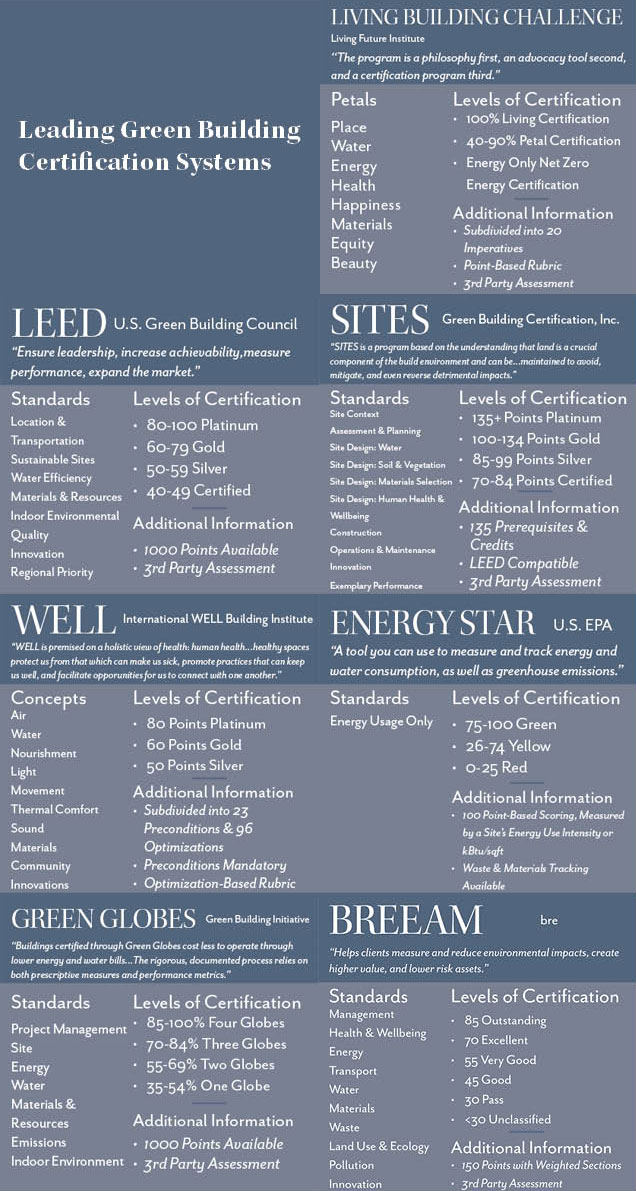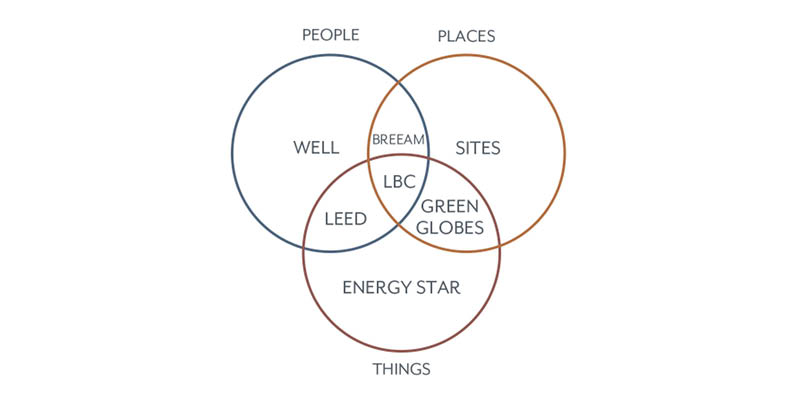Green Building Certification Comparison
By Amy Nelson
For this quarter’s Leaf Litter, we decided to explore the Living Building Challenge because we were intrigued by its transformative power, holistic balance, and performance-based (rather than prescriptive) approach. And, yes, there is also something to the “living” part of its name–the idea of a building being a functioning, breathing system–that aligns interestingly with the work that Leaf Litter readers do in conservation, ecological restoration, and of course, regenerative design.
But with ever-expanding green building and green infrastructure markets, and with new research developing daily, there are many other useful green building certification systems as well. Given the complicated nature of designing, building, and operating infrastructure—especially of the innovative green type—and the fact that these certification systems are often evolving being updated with new versions, deciding which system is the best fit for your project can be complicated. To help, we’ve condensed seven of the leading certification systems into a basic reference guide. As you can see, the rating systems hold several values, principles, and standards in common. For the most part (apart from Energy Star which considers energy use only), the tiered rubrics consider many of the same categories: health, resources, environmental impact, materials—if only phrased and weighted a little differently.

People, Places, and Things
To help distinguish certifications from each other, we found it useful to view them within a three-lens framework: PEOPLE, PLACES, and THINGS.
If a system is PEOPLE-FOCUSED, the underlying philosophy emphasizes social sustainability, equity, and the health, wellbeing, comfort, and happiness a building instills in the people and the stakeholders impacted by the project’s development. If a system is PLACE-FOCUSED, the underlying philosophy emphasizes environmental resilience, ecological sustainability, biodiversity and community, and the physical site and landscape impacted by the project’s development. If a system is THING-FOCUSED, the underlying philosophy emphasizes economic sustainability, materials, natural resource conservation, and the operations and performance impacted by the project’s development.

The Living Building Challenge fits snugly in the middle because of its dedication to balancing all three categories as a living body in an ecosystem of other bodies. But the great thing about these rating systems is you can’t go wrong. No one system is inherently better than the other. And while one system might emphasize PLACE, don’t think it doesn’t also heavily consider PEOPLE and THINGS, as well! It’s all about culture fit—or rather, project fit. You can be confident no matter where your project leads you, you’ll utilize a system supported by research-based materials in resilience and sustainability, and you can create a structure that adds something of value to the world.
We recommend you dig into the detailed standards below. There is no one-size-fits-all green building system, and it’s important you choose a partner you feel you can work with throughout every hurdle and obstacle a project can throw at you over the long-term. Talk to each system’s accredited professionals (who are extremely knowledgeable and helpful!) about any questions you might have and trust your judgment on how it feels to work with someone.
